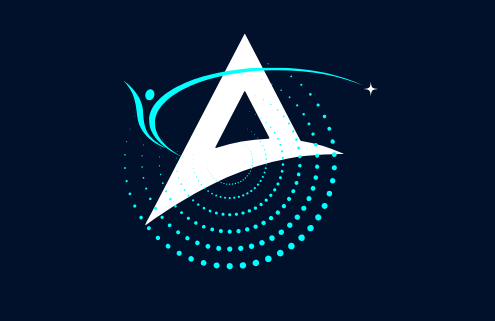AI Personalization Tools: How to Craft 1-to-1 Experiences

Introduction
In today’s world, companies compete on how well they know their customers. Customers want experiences that feel natural, useful, and relevant. That’s where AI-powered personalization comes in. Thanks to artificial intelligence, brands can now tailor every touchpoint to match each person’s needs and habits. When done right, this boosts customer happiness, builds loyalty, and helps your business stand out in a crowded market. The main goal? Make every customer feel like they’re the only one that matters.
Understanding AI Personalization Tools
What Is AI Personalization Tools?
AI-powered personalization means using tools like machine learning and automation to create unique experiences. Instead of generic messages, AI helps brands predict what each customer wants. It means every visit, email, or ad feels like it was made just for them. Whether it’s recommending products, customizing emails, or shifting website content, AI acts as a smart assistant that adapts instantly.
Benefits of 1-to-1 Personalization
Personalization makes customers more engaged and satisfied. When users see content that matches their interests, they’re more likely to convert. It also encourages shoppers to come back more often, boosting sales over time. The result? Customers grow loyal and start to see your brand as their favorite.
Challenges and Considerations
Getting personalization right isn’t always easy. Data privacy laws like GDPR and CCPA remind us to be careful with personal data. Building an effective system requires integrating different tools, which can be complex. Finally, while automation offers efficiency, it’s key to maintain a human touch to keep trust high.
Core Components of AI Personalization Tools Strategies
Data Collection and Management
The foundation of personalization is data. You need to gather information about what customers do, buy, and prefer. This includes behavioral data (page views, clicks), transactional data (purchases), and demographic info (age, location). It’s crucial to store this data securely and follow privacy laws. Always keep data clean and accurate to improve AI predictions.
Machine Learning and Algorithms
AI models analyze collected data to uncover patterns. Popular models like collaborative filtering can recommend products based on similar users. Over time, these algorithms learn and adapt, making predictions more accurate. This isn’t a one-and-done task; ongoing learning keeps personalization sharp.
Content and Offer Customization
Dynamic content changes based on customer info. For example, website banners can display different messages for first-time visitors versus loyal customers. Personalized emails can suggest products they’re most likely to buy. Amazon’s recommendation engine stands out as a top example, showing customers items they’re likely interested in based on past shopping habits.
Omnichannel Personalization
The goal is to deliver a consistent experience across all channels—websites, email, mobile apps, even offline stores. Synchronizing data in real-time helps maintain the same personalized touch everywhere. If a customer adds items to their cart online, they should see those same items in your app or in-store suggestions.
Strategies to Implement AI Personalization Tools
Building a Robust Data Infrastructure
Start by connecting your customer databases—CRM, CMS, and analytics platforms. Unified data helps AI create clearer customer profiles. Use AI tools designed for data unification and insights, which make understanding customers easier. The goal is to have a single, accurate view of each shopper.
Selecting the Right AI Tools and Vendors
Choosing the right technology is critical. Look for features like easy integration, customization options, and scalability. Some popular platforms include Adobe Target, Salesforce Einstein, or Dynamic Yield. When evaluating options, test how well they fit your needs, budget, and existing systems.
Creating Personalized Customer Journeys
Plan how each customer moves through their buying process. Use AI insights to map these journeys. Trigger-based messages can activate when a shopper visits a page or abandons a cart, sending relevant offers instantly. Netflix’s tailored content recommendations showcase how AI can make content consumption personal.
Testing and Optimization
Always test what works best. Use A/B testing to compare different messages, layouts, or offers. Review analytics to see how personalized content performs. That way, you can tweak your approach based on real data and keep improving your results.
Ethical and Privacy Considerations
Data Privacy Regulations
Following laws like GDPR and CCPA isn’t optional. Always be transparent about how you use data and ask for permission. Clear opt-in choices build trust and satisfy legal requirements. Protect customer data at all costs to avoid fines and damage to your brand.
Ensuring Responsible AI Use
It’s easy for AI to make biased suggestions if not carefully managed. Always check your algorithms for fairness. Be honest with customers about how personalization works and why it benefits them. Building trust is key to long-term success.
Best Practices for Ethical Personalization
Give users options to control their data preferences. Let them turn off personalized ads or content if they choose. Respect their privacy and honor their choices to foster loyalty and confidence in your brand.
The Future of AI Personalization Tools
New tech like augmented reality and voice assistants will make experiences even more personal. Imagine trying on clothes virtually or talking to a chatbot that understands your preferences better than ever. AI-driven predictive analytics will anticipate needs before users even express them. Staying ahead means continuously adopting these innovations and listening to customer feedback.
Tools Lists
The guide will detail how you can deploy AI to adapt your customers’ experience exactly as per their requirements. We shall further look at some 10 of the top AI personalization tools and platforms available for different channels, use cases, and business types, which are:
-
Insider Pro
-
Braze Connect
-
CleverTap Solutions
-
Adobe Target & Campaign Suite
-
Dynamic Yield Optimizer
-
Klevu AI
-
Monetate Hub
-
Intellimize Edge
-
Lyne Assist
Conclusion
AI Personalization Tools open doors to crafting experiences that truly resonate with customers. When done thoughtfully, it boosts engagement, drives sales, and builds loyalty. But remember: strategy and ethics matter just as much as technology. Start small—test, learn, and grow. Focus on quality data, keep transparency front and center, and always seek to serve your customers better. With the right approach, your brand can turn simple interactions into meaningful 1-to-1 relationships.
Promotional
Looking to create content that truly connects with your audience? Our services focus on crafting human-friendly writing while integrating cutting-edge AI Personalization Tools to boost engagement and reach. Whether you’re a marketer, blogger, or business owner, we help tailor your message for maximum impact. Plus, explore free AI tools that personalize your content creation process, save time, and elevate productivity without compromising quality. Ready to find the perfect tools for your needs? Click the button below to discover the best AI Personalization Tools for your content strategy!




The text flows with organic, meditative rhythm, allowing ideas to emerge naturally. Each phrase adds to the overall cadence, encouraging the reader to engage thoughtfully, absorb meaning, and appreciate the nuanced layers of thought.